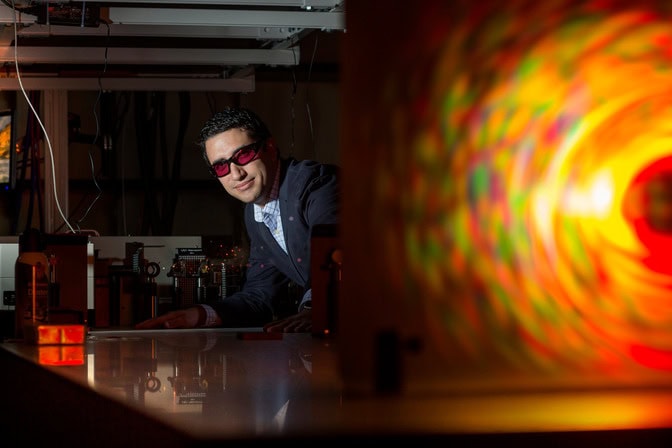
X-ray vision
One of the first experimenters at the new flagship US laser, Michigan alum Franklin Dollar’s mission is bigger than research.

One of the first experimenters at the new flagship US laser, Michigan alum Franklin Dollar’s mission is bigger than research.
When the first beam of light ran through a laser system that will be the most powerful in the U.S., it was delivered to an experiment designed by an old hand at U-M’s Center for Ultrafast Optical Sciences.
As a graduate student in the late 2000s, Franklin Dollar (MSE Electrical Engineering ’10, PhD Applied Physics ’12) built experiments at HERCULES, the most intense laser in the world at the time. HERCULES has now been upcycled into ZEUS, the Zetawatt-Equivalent Ultra-short laser pulse System—which will offer triple the power of the next largest US lasers. Its peak power is three petawatts, or more than 100 times global electricity production, but only for a few quintillionths of a second.
Dollar has stayed connected with the lab, leading experiments in late 2022, early 2023 and January this year that the ZEUS team used to work out the bugs in the system. Then earlier this month, he led ZEUS’s first official experiment in the flagship target area, where the signature zetawatt-equivalent experiments will take place.
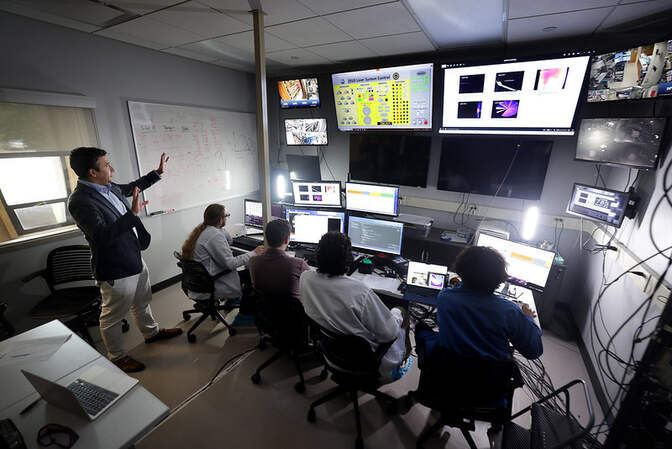
There’s an animated joy to the way Dollar describes his field—like he can’t help smiling about the questions, the laser experiments that help answer them, the technologies that spun out of it already and those that are coming in the future.
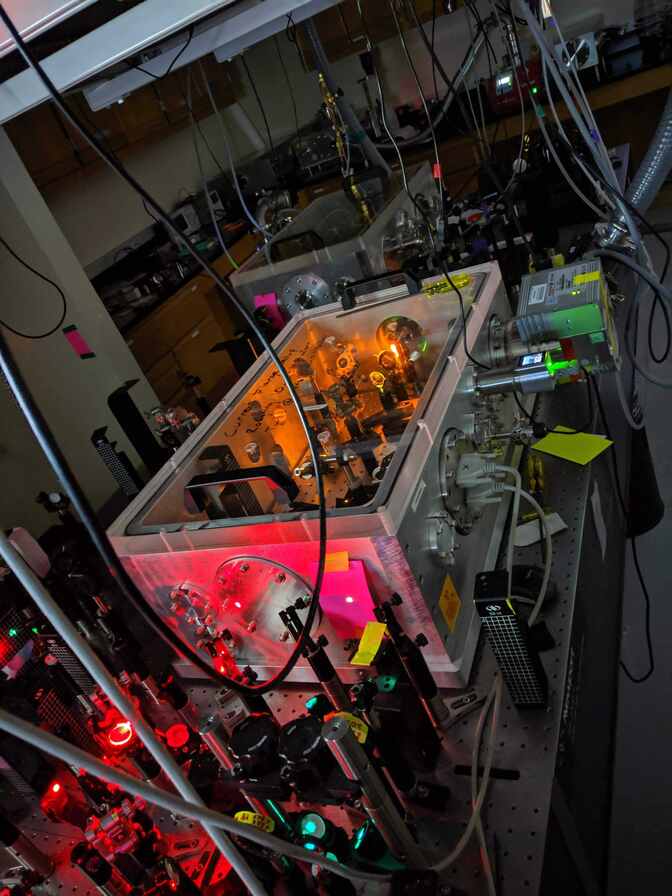
“In my field right now, which… It doesn’t even have a consistent name. I can call it high energy density science, I can call it advanced accelerators, I can call it fusion energy. I can just wave my hand and say ‘plasma physics.’ But what’s really exciting is that we’re using these great tools that are able to create some of the most extreme conditions in the known universe,” he said.
Few fields offer the breadth of laser plasma physics. As intense, powerful but very short pulses of light strike a target, whether it’s a gas in a chamber or a solid like a metal foil, they turn atoms into a hot soup of ions and free electrons—which the strong light waves can then accelerate. Although they take up a tiny amount of space, those experiments become a microcosm of some of the most extreme dynamics in the universe, enabling researchers to explore processes that previously could only be observed with a powerful telescope.
“It wasn’t that long ago that you could only get these answers from the middle of galactic nuclei or some crazy astrophysical process. And now we’re making these plasmas on lasers that fit in a university lab. A PhD student in a basement can see these types of events unfold and tease out these secrets of the cosmos,” he said.
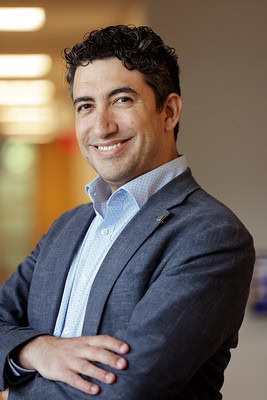
Dollar’s own work is very fundamental—making the plasmas and seeing what they do, and optimizing experiments to produce X-rays or particle beams. These have applications in medicine, semiconductor engineering, basic research and more. Even before adding in special relativity, which crops up as the electrons and ions in the plasma are accelerated to near the speed of light, the extreme electric and magnetic fields already produce a complex behavior that is hard to describe mathematically.
He is most motivated by the unknown, untangling these challenging dynamics. But he is also excited about the future applications coming out of the laser plasma physics field that brought us LASIK surgery to correct vision, and the miniature particle accelerators and X-ray sources that he is investigating. The ability to accelerate particles on the scale of a room rather than over miles of magnets could change the way semiconductors are manufactured, help more hospitals produce their own radioactive (or nuclear) medicines for targeting cancer, and enable a new kind of low-dose X-ray that can image soft tissues like organs.
His first official experiment at ZEUS explores extreme ultraviolet light, a step down in energy from those “soft” X-rays of interest for medical imaging.
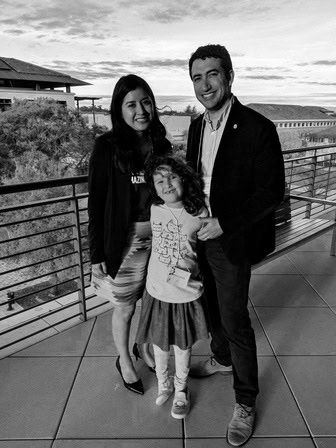
“The experiment that we are undertaking is to look at extreme ultraviolet light, the same light that is used to make state-of-the-art computer chips,” said Dollar. “While we understand how to use laser interactions to make bright X-rays, we actually don’t really know what happens in this wavelength region, which has applications across medicine, chemistry and nanofabrication.”
He’s recognized as a trail-blazer, a member of the Department of Energy’s Fusion Energy Sciences Advisory Committee and a fellow of the American Physical Society. Last year, he was named a co-lead of a project prototyping a 25-petawatt laser, which could re-launch the US as a leader in high peak power lasers. At present, the most powerful in the world is located in Romania, a 10-petawatt machine that is part of Europe’s Extreme Light Infrastructure.
But if Dollar had been judged by his early undergraduate grades, he would have been considered unlikely to make a career in plasma physics. He faced challenges that weren’t on the radar of most college recruiters and administrators, and he knows what it took to overcome them. Now, as the associate dean for graduate studies at the University of California, Irvine’s School of Physical Sciences, Dollar uses that knowledge to provide better access and support for students from historically excluded backgrounds.
Dollar is likely the third American Indian to be hired as a faculty member to a top-100 physics program. A member of the Dry Creek Band of Pomo Indians, he is well aware of stereotypes that freeze Indigenous cultures in the past and lead some to view his high-tech career as a contradiction. But his identity as an American Indian is intertwined with his identity as a scientist.
“All societies have looked out at the world and wondered,” said Dollar. “Being a scientist and being an explorer isn’t just from the last few hundred years of history, but something that’s embedded in all societies, for thousands of years since these cultures began.”
Dollar knows more than most about the many ways this country leaves talent on the table. Growing up in Sonoma County, he saw the stark contrast between the wealth of some of California’s richest wineries and the poverty of the migrant workers and his own life on the reservation run by his tribe.
Like many reservations, the Dry Creek Rancheria is on land deemed less suitable for agriculture—rockier and hillier than the surrounding vineyards, Dollar observed. Without the history of displacement by the U.S. government, he might have been raised on ancestral Pomo land, in a once-fertile valley that is now the bottom of the Lake Sonoma reservoir. Instead, he lived where resources sometimes didn’t stretch beyond basic survival.
“All the housing was temporary,” said Dollar. “The Dry Creek Rancheria is land held in trust by the federal government. While the tribe can enforce its own laws, it does not have ownership over the land and thus cannot use it as collateral.”
Without collateral, neither the tribe nor individuals can get a loan for building houses, businesses and more. Even if they could, Dollar pointed out that some banks choose not to do business on reservations because of the complexities around jurisdiction.
Still, the Dry Creek Rancheria provided land for tribe members to live on. When Dollar was in seventh grade, his parents were able to buy a trailer home that the state of California considered scrap—the wiring wasn’t to code. But the reservation isn’t subject to California’s building codes, and it was a step up for his family, which had been homeless.
They made trips to the storage tank of the reservation’s well to bring water back home, although they sometimes had access via a hose. And everyone on the reservation relied on water trucked in during the dry season. When Dollar was in high school, his family’s home got electricity, later than many families in the US went online with dial-up internet. The hardships didn’t seem exceptional to him at the time—he figured most Americans’ lives were more similar to his own than to the affluent vineyard owners on the land surrounding the reservation.
As a teen and into college, Dollar worked at Longs Drugs stores, which have since been acquired by CVS. But it was his time in the tribe’s offices that gave him a taste for serving others and solving problems that affect people—an interest that eventually led him to go for a position in his college’s administration.
Dollar is aware of the many gaps that stood between his teenage self and the science and engineering work he excels at and enjoys. The associate dean position enables him to address some of those gaps for others.
On his own journey, Dollar was fortunate to have a science teacher who believed in his potential. Well-resourced schools may offer upwards of 10 advanced placement courses, but Geyserville New Tech Academy, with 150 students, had only a few.
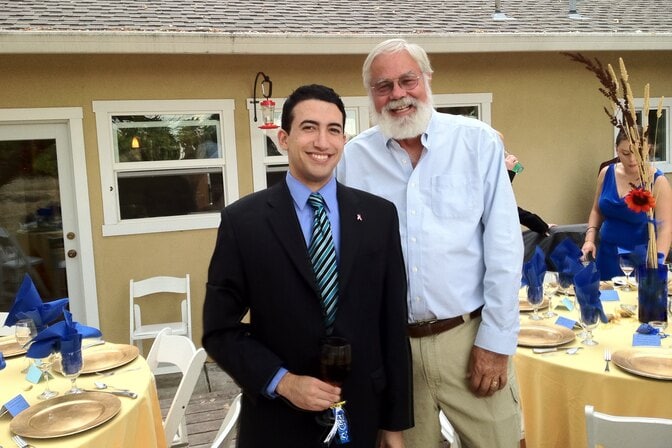
Brad Goodhart, the science teacher, supervised Dollar’s independent study in Advanced Placement Physics. He also introduced Dollar to some of the skills he would need as a scientist, hiring him to help assemble earthquake detectors.
“I didn’t quite realize that I was doing science at the time,” said Dollar. “My idea of a scientist was whatever I saw on TV. And there were these people who knew everything and could do anything. And I’m like, well, I’m not that. I’m just gonna do this little thing here.”
If he hadn’t been able to get a ride to the SAT testing site an hour away, Dollar says his potential as a scientist might have ended there. This is one of the binds in college recruiting, he says: even looking at the top 10% of each school still selects for the students with resources that enable them to succeed rather than truly measuring each student’s potential. Recruiters often lack the resources and bandwidth to look any deeper, to really see students locked out of transportation and, these days, internet access.
Dollar’s academic talent wouldn’t have been enough on its own, but with social resources in the forms of mentorship and that crucial ride, Dollar had a solid application. Goodhart encouraged him to apply to the University of California, Berkeley.
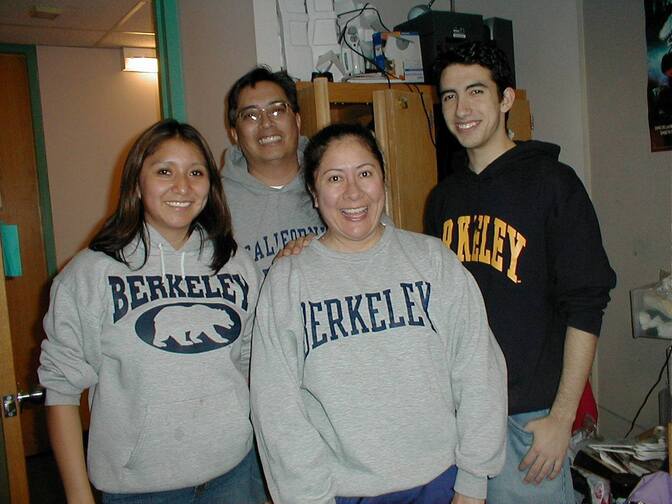
College was a shock in many ways. Dollar was far from home and among peers who came from privileged backgrounds, who had parents, siblings and family friends who could advise on the everyday challenges of college. But perhaps the deeper shock was realizing that he needed to learn how to learn. He’d been a top student in high school. While his GPA at Berkeley was near a 3.0 first semester, it was 1.8 after his second.
“They gave me a ‘one more of these you’re out of here’ letter. And so that was very terrifying,” said Dollar.
“The strategies that got me through high school were clearly not the strategies that were going to get me through college, and I didn’t even understand that there would be new strategies. It hadn’t occurred to me that my idea of what it meant to learn was wrong.”
Without people to reach out to about this challenge and how to overcome it, Dollar internalized it at first, believing the problem was him. But in this place where the enrollment for introductory chemistry outnumbered his entire tribe, he found support in the Native American Recruitment and Retention Center, now the Indigenous and Native Coalition. It became a home away from home.
Around that time, a friend he’d met at Berkeley mentioned free pizza at an information session for UC-LEADS, a program that helps students from diverse backgrounds find opportunities to pursue experiences relevant to their goals. Dollar laughs about being motivated by the food when the program ended up changing the course of his life, connecting him with a research opportunity at Lawrence Berkeley National Laboratory.
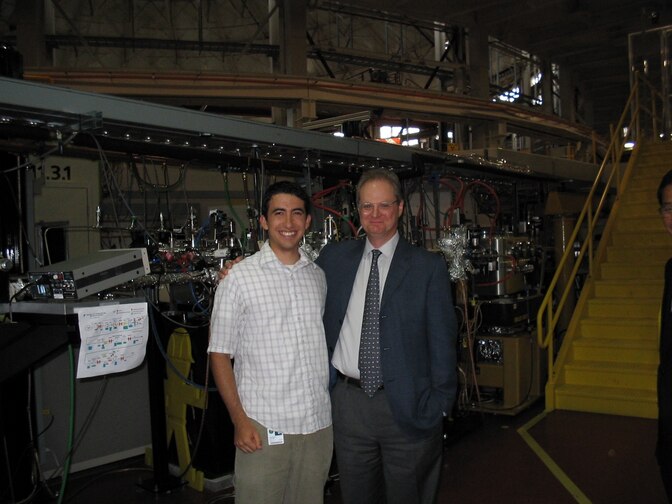
Here, working among graduate students who problem-solved together on whiteboards, Dollar had a model for what learning looked like at the university level. And he was competent, measuring how materials transmit and reflect X-rays, and other optical properties. Collaborating with microelectronics and semiconductor manufacturers as well as a solar observatory project, his successes in the lab had real-world impacts.
As he found community and built his technical skills, Dollar turned his talents to building his community in science and engineering. He’d been involved with the American Indian Science and Engineering Society (AISES) from his first year at Berkeley, although Berkeley no longer had its own chapter. After attending his first conference in Alaska in 2004, he decided to restart the Berkeley group. This led him to become Region 2 representative covering California, Nevada and Hawaii.
“I participated in numerous workshops and conferences, and continued this work at Michigan and beyond,” said Dollar.
“I still have many friends from those early days in AISES. Having a professional group from the diverse tribes across the nation has been an incredible support network, as well as a great resource for advancing higher education policies to better accommodate Native students.”
While he was reluctant at first to take the next step with a multicultural summer program in engineering at faraway Harvard University, he went with encouragement from his mentors at UC Berkeley.
“When I left and went there, all of the years of failure and insecurities that I’d been building up didn’t come with me. I could just show up as a new person and start over and do good work,” said Dollar. “And that was really refreshing.”
It turned out he enjoyed living in a new city. This, along with the knowledge that two friends were heading for the University of Michigan, gave him the courage to apply for a longer stay at another university far from home.
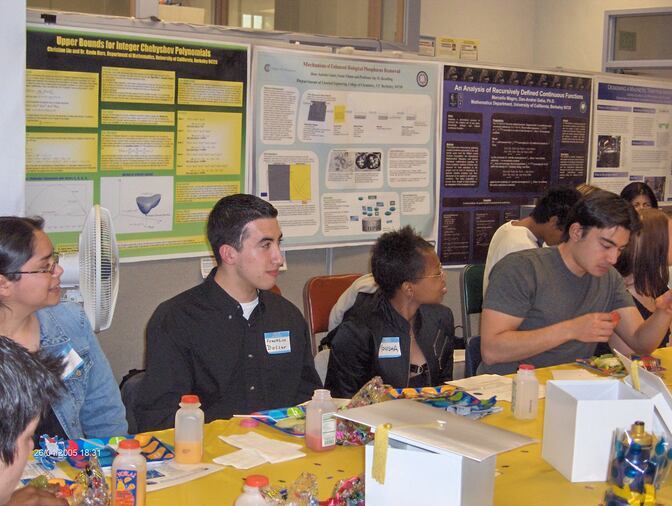
Dollar had initially chosen engineering because his friends from high school who were going into UC Berkeley chose engineering degrees. Asked to specialize further, he went with engineering physics because of the experience he had built up in high school. For a PhD, after working at Lawrence Berkeley’s Advanced Light Source, he leaned further into science with a degree in applied physics. Michigan’s Applied Physics Program turned out to be a great fit.
“They just felt like a family, in a sense, with a strong sense of community,” said Dollar. “People cared about you and wanted you to succeed.”
He’d also heard that the program was turning out 10% of the nation’s Black and African American physics PhD graduates and had assumed it must be a huge program. When he arrived, he realized it was the culture of the program rather than the size—and also the dismal fact that with the number of Black physics PhDs in the US running less than 20 most years, it only takes 1-2 graduates per year to make a program nationally significant.
Meanwhile, US universities award physics PhDs to just one or two American Indians in any given year, so Dollar took it as a good sign when there was already another American Indian in the program.
“They really are a massive force for good, and I learned a lot about inclusive administration based on how Roy Clarke, Brad Orr and Cagliyan Kurdak ran the program,” he said.
Applied Physics emphasized support and inclusion from its beginning in 1987, starting with the assumption anyone who got in should be able to graduate. They also did admissions differently. For instance, Dollar didn’t need to take the physics GRE, which would have tested him on a few topics he didn’t cover in engineering physics—and that he didn’t need or could learn on the fly during his studies. In addition, the leaders held meetings to check in about the department climate and provide a forum for students to get advice on how to succeed.
And importantly, the way learning is structured in the first year of graduate school suited Dollar as well, with a cohort of students essentially on the same schedule, sharing an office and working together.
“Steve Yalisove was my first introduction to active learning. I had never seen anything in my classes, let alone heard about it before. Along with Tim McKay in physics, who leads a lot of physics education work at Michigan, this would be my first exposure to modern pedagogy, and they remain excellent examples of how learning and teaching should take place in the classroom,” he said.
“Now that I am a faculty member and look at best practices, we see that this is the way that people learn best. We give it fancy names like active learning, but really it’s just learning.”
The way applied physics PhD students at U-M are funded is another factor that helps the program achieve a graduation rate of 80%, 20 points higher than the national average. The two years of funding, untethered from any particular faculty member, provides time to find the right lab.
“This is 5 to 7 years, right? Every day in the lab is going to be a failure except for 3 or 4 days. And then you have a success, and you write that up in a paper, and that’s a magic moment. But every other day is a failure, and the only way to get through this is to persevere,” said Dollar. “That’s a very punishing existence. And to get through that, you need to be in a place where you can feel like you’re making a contribution even when nothing works that day.”
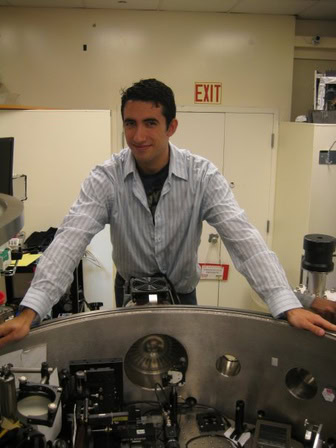
In a lab with complex, shared equipment, Dollar could work on problems that moved his colleagues’ projects forward, as well as his own, and celebrate each win with them. That’s how he ended up in the Center for Ultrafast Optical Science, working under Karl Krushelnick, now the Henry J. Gomberg Collegiate Professor of Engineering. Krushelnick had recently arrived from Imperial College London, and Dollar was his second PhD student.
Experiments on HERCULES were group projects involving graduate students, post-doctoral researchers and staff scientists as well as research faculty.
“Often you can take simultaneous measurements on the same sequence of laser shots, so everyone can get data at the same time for their own theses and also be coauthors on each other’s papers. Having other experiments work out, getting everything working correctly, it fosters collaboration that way,” said Krushelnick.
While there was no particular training to become a faculty member for the applied physics program, Krushelnick understood that the program was making an effort to graduate PhD cohorts that better represent the diversity of the US. For his part, he tried to cultivate a group culture in which team members would freely share ideas, without fear of being shut down.
Dollar worked closely with Chris McGuffey, now a staff scientist at General Atomics, their projects complementing one another as they learned how to improve their experiments. Their cohort was among the first to run experiments on HERCULES. He also stayed connected with AISES, joining the U-M booth at the college fair to offer his insights on life and studies at Michigan.
Krushelnick remembers Dollar as exceptional for both his productivity and independence. Because Dollar had a fellowship with the National Science Foundation, rather than relying entirely on Krushelnick’s research budget, he had more latitude to pursue his own questions. Dollar’s thesis explored how to get cleaner interactions between the high intensity laser pulses—each about a femtosecond (10-15 seconds) long—and solid targets. In addition to publishing in high caliber journals, Dollar’s report won the John Dawson Thesis Prize in 2013.
After his PhD, Dollar continued exploring X-ray generation with pulsed lasers as a research associate at JILA, a joint physics institute between University of Colorado, Boulder, and the National Institute of Standards and Technology. Since 2015, he has been a professor at UC Irvine, continuing to explore the questions that captivated him from his time working on HERCULES. This was also the year AISES named him Most Promising Scientist.
Dollar is taking all that he’s learned about how to survive and thrive in research and using it to reshape the graduate programs at UC Irvine’s School of Physical Sciences. Before he became an associate dean in 2021, he was already working on building and maintaining a strong graduate student community within physics and astronomy by rethinking peer mentoring.
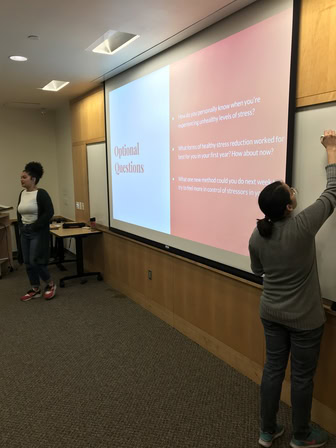
The Physics and Astronomy Community Excellence program is integrated with the curriculum through the faculty lecture series, taking one slot each month. As well as recruiting student mentors, who are then trained in mentorship, these lectures cover key skills and strategies like choosing an advisor, time management, project management, wellness and personal growth. They also provide a direct line for the department to discover the problems graduate students experience, which has been instrumental in turning around a department culture that women found hostile, says Dollar.
In 2021, the program won a four-year grant from the National Osterbrock Leadership Program, totalling $128,000 with matching funds from UCI. That support enables mentors to be compensated for their time and also provides funds for career development opportunities like traveling to conferences. The program materials are available on GitHub for any graduate program to implement, and Dollar is working with other departments to develop their own versions.
“We’re also starting to see, as the climate gets better, our representation for women and other demographics increases,” said Dollar. “And really, the students took the first steps forward that enabled a lot of this. It just took the faculty partnering with them.”
Clarke, founder of U-M’s Applied Physics Program, is delighted to see graduates like Dollar using the program as a model for creating inclusive programs elsewhere.
“This is how real change is made and propagated,” said Clarke. “It’s wonderful to see Franklin applying and expanding best inclusive practices in graduate education at UC Irvine.”
The improvements in support and climate may also be contributing to higher enrollment for Indigenous, Black and Latin American students in recent years, along with what are known as bridge programs. Bridge programs at UC Irvine help students gain conditional acceptance to PhD programs in the physical sciences if they didn’t have the opportunity to participate in research or take upper-level physics classes as an undergraduate.
These students may be drawn from smaller, minority-serving colleges that don’t have a physics department or a nearby national lab to facilitate these opportunities—which are easy to come by in major research institutions for students who know how to find them. UC Irvine participates in multiple programs.
Dollar is on the executive steering committee for the University of California Leadership and Excellence through Advanced Degrees program. This bridge program serves promising students in the University of California system who are interested in PhDs in science, technology, engineering and math but face financial or educational disadvantages. He also works with the Cal-Bridge program, which provides a pathway for California residents who attended schools in the more accessible California State University system.
“These students look more like California as a whole,” said Dollar.
In addition, the NSF-funded Inclusive Graduate Education Network (IGEN) partners on bridge programs with the American Physical Society (APS), American Chemical Society (ACS) and American Geophysical Union (AGU). Dollar is co-lead of the APS program at UC Irvine and manages the fellowships for all three programs, which provide funding for participating students.
As the University of California system has an abundance of applicants, it is easy to discount bridge students because they don’t have all of the components of a strong PhD application, Dollar explained. But some of the conventional metrics, like the very highest GPAs or exceptional standardized test scores, are poor predictors of success in graduate school. A student who looks great on paper may struggle with the project management and problem-solving of a PhD, and a student who struggles to learn independently with lectures and books may thrive in a team environment, as Dollar did.
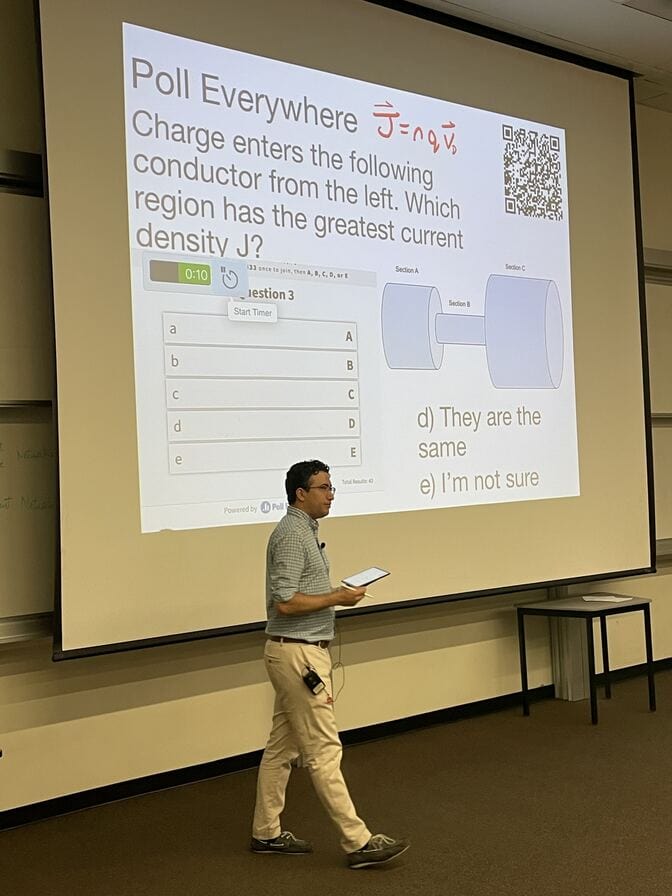
“We look at higher education as a whole, and particularly graduate education, and it really has not changed in 100 years or longer. It’s the same model that we had pre-electricity. It’s worth it to sit down and have a serious conversation about what is the goal of this program? What is it we’re trying to accomplish? And what are the best ways of doing that?” said Dollar.
That extends to admissions. Dollar is part of a movement in higher education to look beyond what boxes a student checks to other indicators of their potential and their motivation, such as how they spend their time outside of academics, to help close opportunity gaps.
U-M faces some of the same struggles, needing to identify students who could thrive here but who haven’t had the opportunities of their better resourced competitors. It is also part of IGEN, running programs with all three partners as well as establishing the Imes-Moore Bridge Program in applied physics, started in 2010. Likewise, U-M also uses a holistic application review process to look beyond boxes checked.
While the graduate program is within his sphere of influence, Dollar remains troubled by the unequal access to undergraduate education. In rural places like his home in Sonoma county, the University of California doesn’t fund visits by recruiters. He knows there are students every year that could do well but never have the opportunity, barred by obstacles akin to the way he had to hitch a ride to take the SAT.
“Those aspects of systemic inequities don’t even get discussed—because people in the system never experience them. Those are the things that really upset me,” said Dollar.
The pandemic normalized virtual events, but they still can’t reach homes in places where companies that provide high speed internet choose not to invest. And we all miss out when those voices never make it into science.
Dollar, as one of those who might easily have been excluded, considers what he brings to physics and academia.
“There really is a different experience when it’s your homelands, in the way that you look at everything around you. The impact that you’re making might leave a legacy that lasts a very long time,” he said.
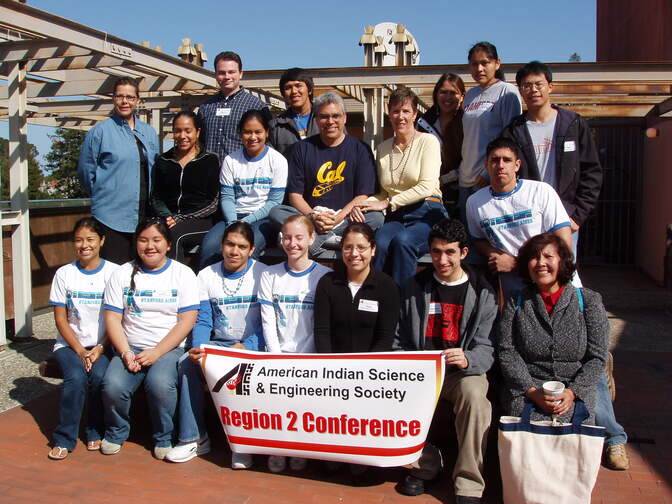
He noted the tendency in US culture to look at history as the last few hundred years. Even in Western Europe, which largely spawned that culture, history goes back to the ancient Greeks but often centers on specific individuals, which is very different from the way Dollar learned to conceptualize the last few thousand years in his own upbringing. The narratives he was raised on include stories of collective responsibility, of collaborating with the natural world rather than conquering it.
“That’s kind of the voice that I try to bring to the table, incorporating those values of looking beyond what our initial frameworks might be,” said Dollar. “How do we incorporate many voices at the table, especially those that we maybe haven’t heard from before? How do we change the definition of what a physicist or engineer or scientist is, when it already doesn’t apply to many of the people in the room?”
Part of the answer is to keep diversifying the room, and to build a culture that will listen to those voices when they speak.